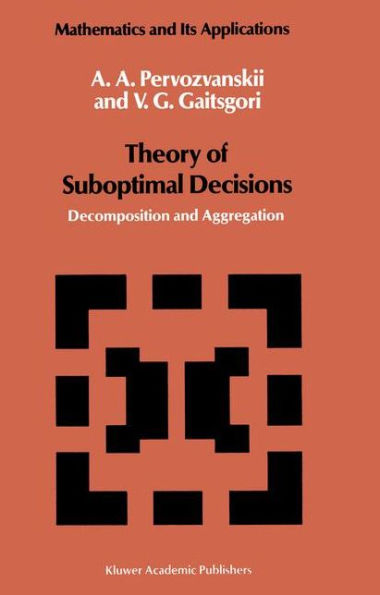5
1
9789027724014


Theory of Suboptimal Decisions: Decomposition and Aggregation / Edition 1 available in Hardcover

Theory of Suboptimal Decisions: Decomposition and Aggregation / Edition 1
- ISBN-10:
- 9027724016
- ISBN-13:
- 9789027724014
- Pub. Date:
- 05/31/1988
- Publisher:
- Springer Netherlands
- ISBN-10:
- 9027724016
- ISBN-13:
- 9789027724014
- Pub. Date:
- 05/31/1988
- Publisher:
- Springer Netherlands
109.99
In Stock

Product Details
| ISBN-13: | 9789027724014 |
|---|---|
| Publisher: | Springer Netherlands |
| Publication date: | 05/31/1988 |
| Series: | Mathematics and its Applications , #12 |
| Edition description: | 1988 |
| Pages: | 384 |
| Product dimensions: | 6.10(w) x 9.25(h) x 0.04(d) |
From the B&N Reads Blog
